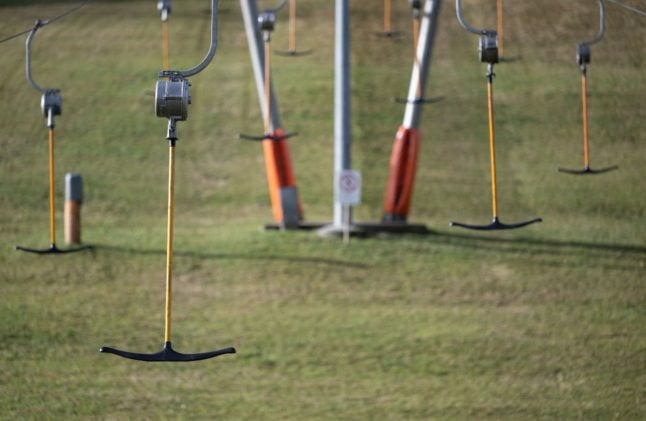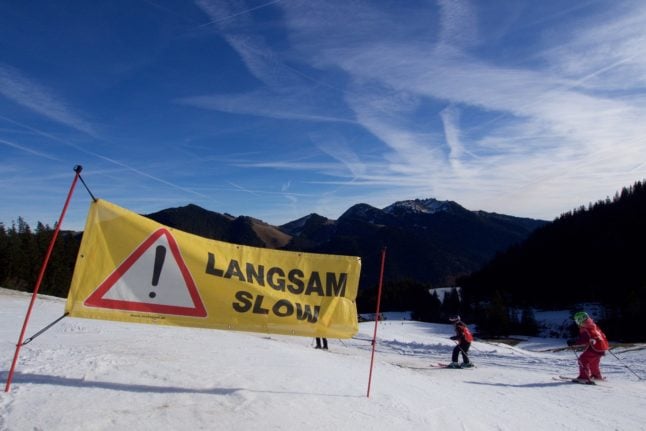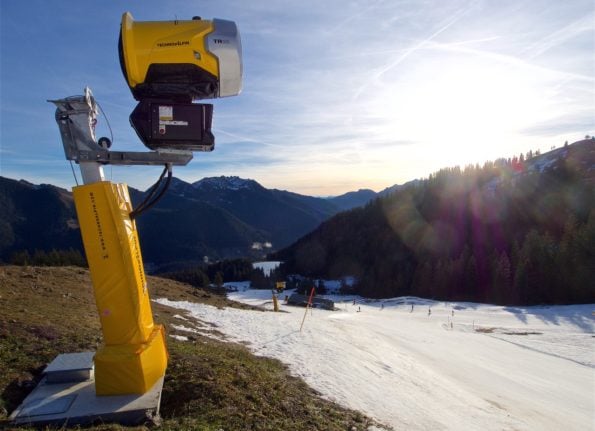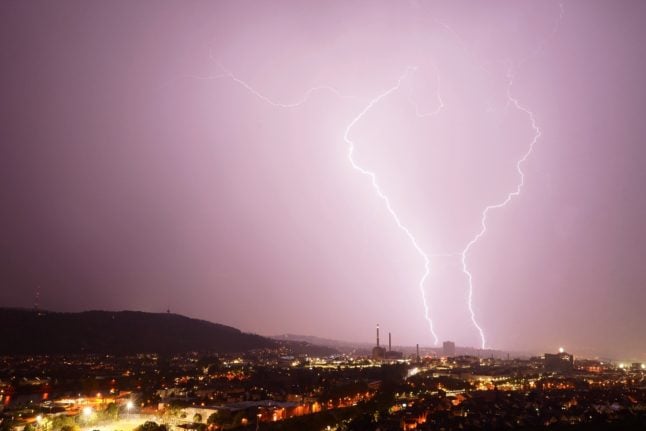Planning a winter skiing break in Germany? You might have to think about hiking instead.
That’s because several ski resorts in Germany are having to restrict operations – and even close their slopes in some cases.
Whether it’s the Bavarian Forest or the Allgäu, it has not been really wintry in Germany since the beginning of the ski season in December.
After the snow melted, operators brought in artifical snow. But it’s even been too warm for that in the last week.
Cable car and resort operators were already expecting a tough winter because of rising energy prices – so the added weather situation is leaving local businesses and economies worried.
Where are their restrictions?
The ski resort at Brauneck in Lenggries, Bavaria, closed its last slope on Thursday evening, reported regional broadcaster BR24.
The operators had put in place artificial snow on lots of the pistes at Brauneck. But the artificial base has melted away in the past two weeks due to mild temperatures and lots of rain.
Meanwhile, at Spitzingsee in the district of Miesbach, which is considered to be snow-sure due to its location at 1,100 metres above sea level, just two of the 10 pistes remained open on Friday, the Alpenbahnen said on its website.

At Hohebogen in the Bavarian Forest there is no skiing until further notice, while others, such as areas at Großer Arber, have postponed the start of the season. The lifts are currently taking hikers up the mountain, though.
In neighbouring Switzerland, some ski resorts have also announced that skiing will be suspended until further notice.
It is unusual for a ski resort to have to shut down operations completely in January. The last time there was a similar situation was seven years ago, when the start of the season was very delayed due to unusually high temperatures.
“We actually had almost the same phenomenon at Christmas 2015,” said Antonia Asenstorfer, spokeswoman for the four ‘Alpen Plus’ areas, which include both Brauneck and Spitzingsee.
Where are there good conditions?
The situation is better at Sudelfeld above Bayrischzell, where 15 of the 27 pistes were reported to be open on Friday thanks to artificial snow.
Several pistes in the Garmisch-Classic ski area, and on the Nebelhorn in Oberstdorf are also open.
Ski lifts are often still running in resorts (even if it’s on a limited basis) and artificial snow has been put down.
READ ALSO: 7 amazing places to ski in Germany
Although operators still have several weeks until the end of the season in mid-March, it’s currently uncertain when those that have closed will be able to reopen properly.

“It’s looking bad at the moment,” weather forecaster Britta Siebert-Sperl told RedaktionsNetzwerk Deutschland (RND). The northern side of the Alps is currently the hardest hit, with the snow line frequently exceeding 1,500 metres. On the south side, the situation is better.
The meteorologist does not expect any improvement “until the middle and in all likelihood the end of January”.
“It could snow a little now and then,” she said. “But that will be wet snow, nothing for winter sports enthusiasts. It doesn’t look like winter is coming at the moment. Something would have to change a lot in the (weather) models.”
Operators, however, remain hopeful.
Antonia Asenstorfer said “as soon as temperatures permit, we will make additional snow again”.
“We initially had a dream start this winter with snow and very cold temperatures,” Asenstorfer said. “Then the almost traditional Christmas thaw set in, which unfortunately is particularly pronounced this year.”
Will I get my money back for a ski holiday?
Many holidaymakers will be wondering what they should do, and if they can get their money back. Ski resorts like Splügen-Tambo give money back to guests if the ski resort is closed, and paid ski school lessons as well as multi-day tickets are refunded.
Travel costs, however, are only refunded in rare cases, travel lawyer Paul Degott told DPA.
A lack of snow is one of the possible risks of a skiing holiday and is not within the control of tour operators. An exception is if the tour operator has made certain promises about the destination in its catalogue or on its website – a “snow guarantee” or “guaranteed snow”, for example.
Dangerous conditions
Another thing to keep in mind if you are heading on a ski break is that poor snow conditions have also triggered a discussion about safety.
In Austria, 13 people have been killed on pistes in the current ski season up to January 3rd, as reported by the Curatorship for Alpine Safety (ÖKAS). A total of 11 people died in Tyrol alone, including two young people from Bavaria.
In many places, there are only narrow artificial snowbands on the slopes which make falls dangerous, said the president of the German Ski Instructors Association, Wolfgang Pohl.
Those who fall at high speed and into the non-snow areas next to the slopes could get injured, Pohl said, adding that people risk “colliding with rocks and trees, and that is of course life-threatening”.




 Please whitelist us to continue reading.
Please whitelist us to continue reading.
Member comments